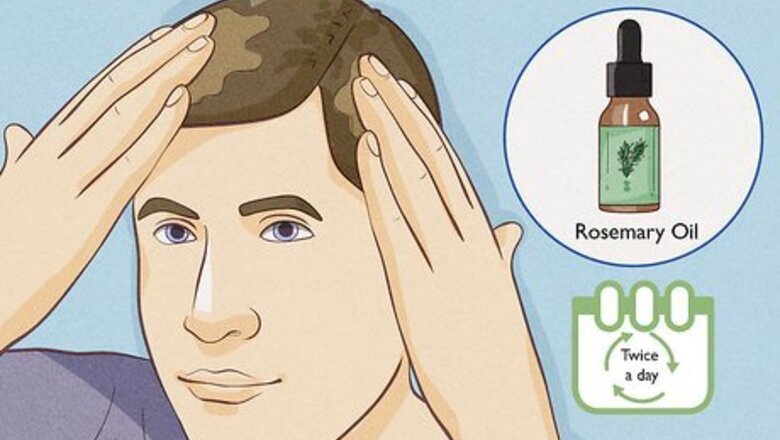
views
- Massage several drops of rosemary oil into your scalp twice a day to encourage thicker and faster-growing hair.
- Use a castor oil hair conditioner to make your follicles more flexible, preventing breakage and balding.
- Use a thickening shampoo that contains ketoconazole once a week.[1] This ingredient thickens hair by killing damaging scalp bacteria.
Using Natural Remedies
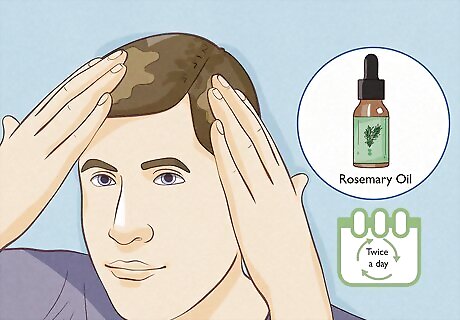
Apply rosemary oil to your scalp twice a day to encourage hair growth. Rosemary oil is an FDA-approved hair loss treatment that has been proven to work just as well as prescription medication. Use a dropper to apply the oil liberally to coat thinning areas, and massage it into your scalp. It’s okay if some of the oil gets on your hair, and it won’t cause any harm. Aim to use about 10-15 drops per application, and continue using the oil for at least 6 months for best results. You can find rosemary oil in most supermarkets and health stores in the beauty section, or you can order it online.
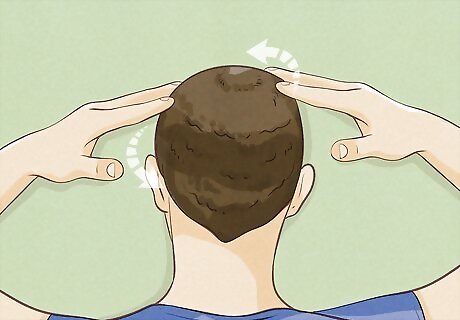
Massage your scalp in the shower to increase blood flow. When you’re shampooing your hair, press your fingertips firmly into your scalp, and knead in small circles, working from your hairline to the top of your head. Then, massage the sides of your head to encourage lymphatic drainage and decrease tension, which can cause hair loss. You can also book a scalp massage at most spas as a standalone appointment or an add-on to a regular massage. If you have finger pain or arthritis, try purchasing a scalp massage tool, which are available at most beauty supply stores. These are brush-like tools that you can hold and move in a circle to massage the scalp without straining your fingertips. You can normally use these both inside and outside of the shower to increase blood flow.
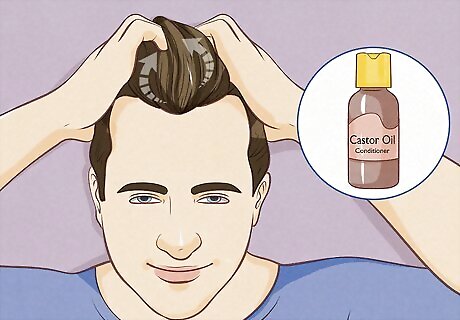
Use a castor oil conditioner to increase hair flexibility and prevent breakage. While castor oil doesn’t encourage hair growth, it is helpful as a conditioner for your hair. Use the oil 1-2 times per week in conjunction with other products, like shampoo and conditioner. Squeeze a nickel-sized amount into your palm and massage it into your hair and scalp before rinsing. This will coat the hair in oil, making it less likely to break. You can find black castor oil conditioner at most beauty stores in the natural hair section, or you can order it online. Some people are allergic to castor oil, so do a spot check by applying a drop of the oil to the back of your hand. If you experience itching, redness, or irritation, avoid using the oil on your scalp.
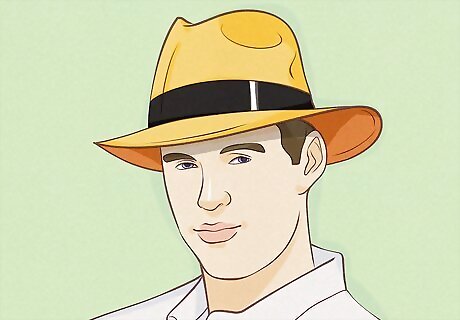
Wear a hat to protect your hair from sun damage. Sunburn on your scalp can make your hair brittle, causing it to break and appear thinner. Choose a full-coverage hat to protect your scalp, and apply sun block to any exposed patches to prevent them from getting scorched.Did you know? Sunburn causes your scalp to produce a compound called superoxide, which causes your hair to stop growing and start shedding from the scalp.
Shampooing and Conditioning
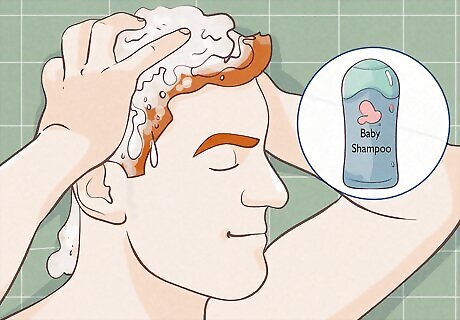
Wash your hair every other day with mild shampoo to preserve natural oils. Use a mild shampoo, such as baby shampoo or shampoo for damaged hair, to wash your hair every other day. This will help your hair stay clean and appear fuller without removing any of the oils that keep it healthy. Washing your hair every day can cause it to become dry, leading to more thinning and breakage.
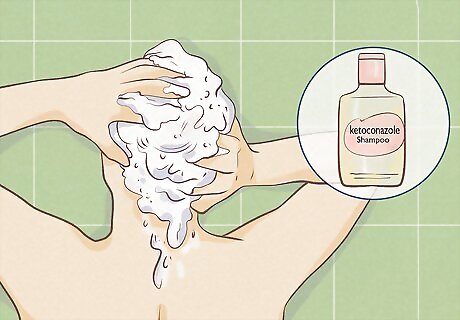
Use a thickening shampoo with ketoconazole once per week. Ketoconazole is a type of medication that's used to treat thinning hair by killing unhealthy bacteria that live on the scalp, which can cause thinning hair. At the pharmacy, look for a non-prescription shampoo, such as Nizoral A-D. In the shower, use a quarter-sized amount of the shampoo, and lather it into your hair, focusing on the roots. If your hair improves, you can try increasing your usage to twice per week. Keep in mind that washing too often with thickening shampoos can cause your hair to become dry and brittle, since they remove the hair’s natural oils. If you want to use the shampoo more often, talk to a dermatologist to see if it could help.
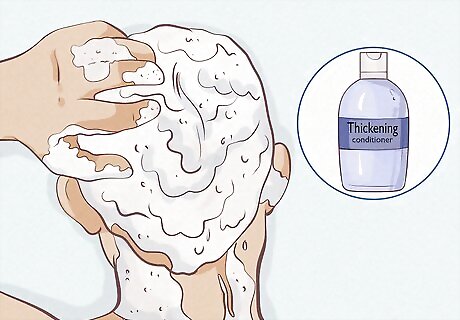
Try a thickening conditioner to increase the size of your hair strands. Thickening conditioners or serums work by coating each hair strand with polymers to make them appear larger. Once or twice per week, massage a quarter-sized amount of the conditioner into your hair, focusing on the ends of your hair rather than the root to coat each strand thoroughly. Then, rinse your hair completely to remove any excess conditioner. The results from thickening products are temporary since the polymers will wash out the next time you shampoo your hair.
Cutting and Styling Your Hair
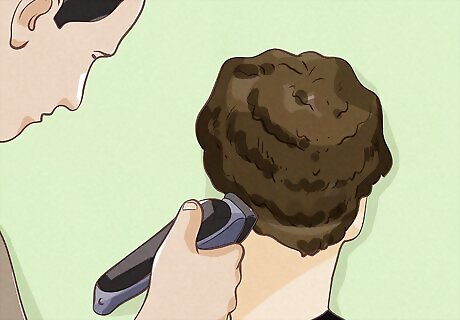
Go to a professional barber who specializes in men’s cuts. Look up professional barbers in your area, and read reviews of their work before making an appointment. When you go for your appointment, talk to them about your current hair care routine, and explain to them that you want your hair to appear thicker and fuller naturally. Most experienced barbers will be able to tell you if you need to change anything in your routine, and they can recommend products for you to try.
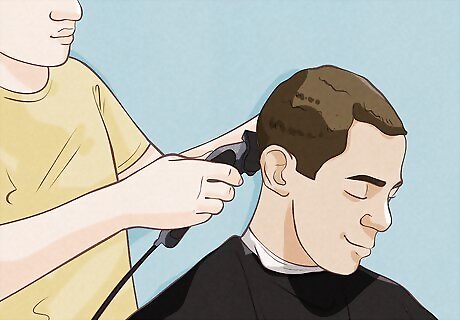
Keep your hair cut short to make it look thicker. Ask for a haircut that’s shorter all over your head to make thinness less apparent. Talk to your barber or stylist about what cuts would look best for your face, or come with an inspiration picture. Cutting your hair shorter will also help to make the strands you do have thicker, since they’re getting more nutrients. Don’t be afraid to ask your barber for recommendations. They’re trained professionals who want to help you feel your best! Good Styles for Thinning Hair Buzz cut: Buzzing your hair will make each strand the same length, which is ideal for people with thinning hair. High and tight: This military-style cut leaves the hair slightly longer on the top with a fade on the sides. Pompadour: The pompadour has a longer top with short sides, and you can slick your longer hair back to cover up any thinner patches on top of your head.
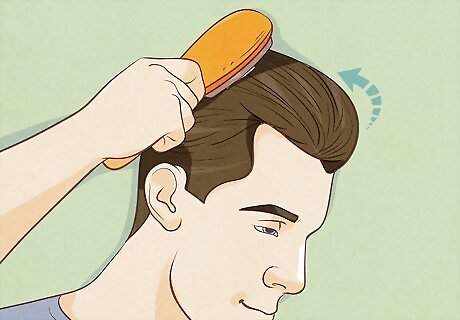
Use your fingers and a round brush to help style your hair. When you’re doing your hair, avoid using a comb, which will separate the strands and cause them to look thin and limp. Instead, use a small round brush or your fingers to lift and shape your hair. Then, apply your products as needed. Using your fingers or a brush will also add texture to your hair, giving it even more volume.

Style your hair with light, non-greasy products, like pastes and creams. Opt for a pomade, cream, or spray that has a matte finish to keep your hair from being weighed down by the product. Use your hands to work a small amount of the product into your hair, and then add more if needed. Smooth, wave, and lift your hair with your fingers to create the style that you want. Try to avoid shiny, greasy products, like gels. These can make your hair clump together and look thin. You can also try “thickening” or “volumizing” sprays and pomades to see if they help make your hair appear fuller.
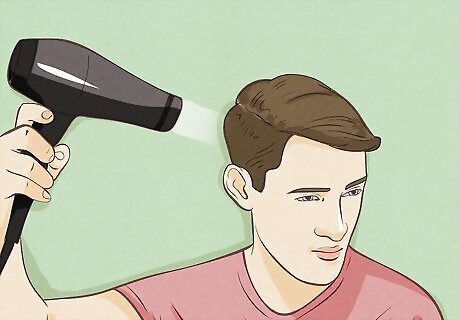
Let your hair air dry, or use a blow dryer on the cool setting if you’re in a hurry. Pat your hair mostly dry with a microfiber towel or an old T-shirt to prevent breakage, and let it dry completely before touching and styling it. If you’re in a rush, press the “cool” button on the blow dryer’s handle before you begin drying your hair to prevent heat damage. Try to avoid drying your hair with a regular bath towel since they’re rougher and can cause your hair to break.
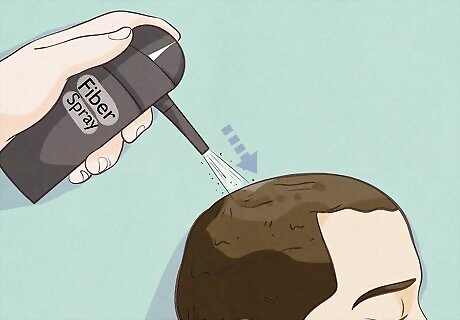
Ask about professional filling products to cover your scalp. Some barbers and stylists have access to professional products that aren’t always available for people without a cosmetology license. Talk to them about fiber spray, which is a powder that has tiny hair-colored fibers to make it look like you have more hair. If you’re worried about covering a pronounced part, ask about color sprays, which coat your scalp to match your hair. You may be able to find non-professional products for sale without a cosmetology license, which can help you get the hang of applying and using the spray. However, the professional-grade powders tend to be higher quality and have smaller, more natural looking fibers. Keep in mind that once you apply any type of fiber spray, you can’t touch your hair or the fibers will begin to shed. Most of the effect will disappear after you take a shower or wash your hair.













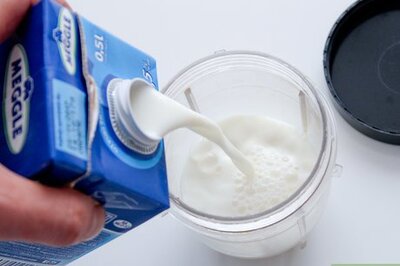




Comments
0 comment